
Twenty-Four Hours in São Miguel
Smell the roses. Slow down. Chase a thrill. Get a move on. These conflicting adages of traveling disagree on the best way to experience a trip. While some travelers have the luxury of time, other trips are more compressed. In my twenty-four hours in São Miguel I discovered dynamism and zen in a limited timeframe by making the most of every moment.
São Miguel is one of the nine Azores Islands that lay 1,400 kilometers west of mainland Europe in the Atlantic Ocean. The volcanic islands were all settled around the 15th century by Portuguese explorers and often draw comparisons to Hawaii for their volcanic lakes, warm weather, verdant mountains and colorful flora and fauna.
I landed in Ponta Delgada, São Miguel’s capital, at 6 am. After a quick stretch of the legs, I disembarked the plane to a fantasy scene on the tarmac. Overhead the nearly full moon hung as bright and close as I’d ever seen it. It reflected on the dark Atlantic which stretched as far as the horizon in all directions. I could not help but laugh aloud feeling the invigorating morning air in this surreal environment. If anyone gave me any strange looks, they had every right.
A quick taxi ride brought me to my hotel, where I changed and left my bag to walk through the still sleepy town of Ponta Delgada. My taxi driver told me around 70,000 people lived there, but the streets were entirely empty. I walked around the town to take in the mostly white and black buildings and cobblestone streets. A few souls joined me on the waterfront to watch the rising sun over a mountain to the East, bursting like a ball of flames from a volcano.
With an hour to kill before I could sit for breakfast, I let my feet take me wherever they would. A few blocks heading north and a turn later they brought me to Jardim Antero de Quental. Birds chirped and flitted through the trees. Lush green trees and plants surrounded everything else. It seemed as good a place as any to knock out some journaling, and in the quiet and stillness I jotted four pages of reflections and expectations.
At eight o'clock church bells rang. They echoed across the small town, and you could hear each individual bell toll if you listened closely. Doors opened and so did cafes as residents followed the smell of fresh bread and espresso. I waited in line at a cafe listening to the smack smack of the espresso machine against the countertop before every refill. My tosta misto and cappuccino gave me company during my morning reading. The news was playing and I listened to two older men lamenting Benfica’s unfortunate loss the evening prior.
Feeling refreshed despite the lack of sleep, it was time to shop for postcards and the usual assortment of knick knacks. Fridge magnets, coasters and other small trinkets always satisfy my desire to bring a small piece of wherever I travel home with me. I wandered into the Igreja de São Pedro, which was empty but beautiful the day before Easter. The pews looked inviting so I sat and took a beat to reflect. Churches connect me to my Catholic grandparents, and I can only imagine Bop and Dziadzi puzzled by how the hell I ended up in a church on a small Portuguese island in the middle of the ocean.
I walked further along the waterfront and stopped to watch a daredevil on a jet ski hitting hairpin turns to wow a growing audience. He rushed to the dock and at the very last second swooped around to pull off a clean 180 degree turn. We all applauded his moves— even the seagulls squawked— and I left with the right amount of adrenaline to go off on my hike.
Halfway to the hotel I realized my feet already hurt. I looked down at my city boy white sneakers and knew they would not help me hike a mountain. Fortunately an athletic shop down the block sold New Balances for under 50 euro. It took a few sizings to get the right fit, considering a 9.5 US is definitely not a 9.5 EU. The hotel front desk called me a cab and I took a 26 kilometer ride to the summit.
Farms covered the rolling hills in the countryside, with cows munching on tall grass all around. As you climb in elevation the environment gets woodier with tall and skinny trees that look like sharpened sticks and stilts. The view could almost pose as the hillsides of Northern California. My excitement grew as the road got steeper. At the top of the mountain, I thanked my driver and told him I would be calling later.
Nothing could have prepared me for the entrancing view in front of me. The twin lakes rest at the bottom of a volcanic crater ensconced by green hills. The glassy but dark Lagoa Verde and Lagoa Azul, the former green and the latter blue, were separated by a man-made bridge and a natural peninsula. Tourists on a wooden viewing deck at Rei Vista snapped pictures and conversed in dozens of languages, but their smiles were universal. Bees buzzed in bushes and birds flew around colorful hydrangeas. Motorcycles and cars passed loudly behind, clearly too busy to take in the breathtaking scene.
I admired the view a while longer and reflected until my feet were ready to move. I decided to take the longer loop down to Sete Cidades to prolong the experience. Walking along the crater ridge, I had the Atlantic to my left and the lake on my right. There is nothing but the dirt path and green landscape and blue water and you merge with your surroundings as one singular form.
A few cows and houses on the orchards by the ocean remind you of civilization’s existence, and other than a few soft hellos offered by hikers you are completely alone. You hear the crunch of your footfalls on the dirt and birdsong and feel the light breeze and warm sun on your neck. There is nothing but peace. I was exactly where I needed to be in the world.
In my moments of zen I may have overestimated the hike. My body ached after 10 kilometers and so I thumbed a ride down the hill with a lovely couple from Ohio on their third visit to the Azores Islands. Sete Cidades means seven cities in English, but it really is just one small village. Legend claims that the lake’s colors come from the tears of a green-eyed princess and blue-eyed shepherd who were forbidden to love one another by the king of the village. It’s a much more interesting story than the scientific explanation involving algae and water depth.
Once in the village I needed a bite to eat and a beer. An American couple walked into the nearest restaurant and were turned away. I tried my luck in Portuguese and was welcomed into the small and “closed” establishment by a rambunctious family of nine. They served me a Rissol de Carne and Sagres and gave me privacy to enjoy my meal. It might have been the best hospitality I’ve ever received from locals.
I walked through the village to peek in the church before milling about the small pastel colored houses. Other than groups of tourists waiting for taxis, the town was quiet. More cows stood in the pastures as I made my way to the lake’s edge to read and soak in the sun. The top of the volcanic ridge was 1,200 feet above me as I dozed by the water. So gently I awoke to the warm sun on my face that I hardly noticed an hour passing by.
When my time to join the taxi line arrived, I called the same driver who had brought me from town to pick me up. Antonio played 2000s American pop music like Natasha Bedingfeld and told me that life on the island never felt too stressful. I believed every word he told me. All my daily worries seemed too far to reach me in this remote paradise.
Before dinner I took a quick shower and bought aloe vera for my Maine lobster colored sunburn. Nobody, truly nobody, is stronger than the sun. A trip to Portugal is not complete without cod and port wine, so I ordered both in a restaurant by the harbor with large glass windows framing the hills as the skies darkened. I strolled along the waterfront and drank in the air. At that moment I felt like I could have walked along the entire coastline of São Miguel. I wanted nothing more than the unburdened independence of no one expecting your presence anywhere at any time. I was a stranger in the middle of the Atlantic. I was in control of the present. I was free. But early flights must be caught and so too some Z’s to reach the airport on time.
The next morning I found myself on the tarmac that I had stepped off just over twenty-four hours before. A thin grey mist hung in the air. The clouds and my iPhone weather app both threatened rain. I found it difficult to believe how much I had squeezed into so little time. On the side of the plane, the airline’s motto – Dream Azores– appeared in lime green. I stepped out of my dream and onto their aircraft with a full heart and clear head.
We are always chasing time and thrill, especially when we travel. But there is as much satisfaction in recognizing time as finite and peace as the yin to thrill’s yang. Each second is what you make of it. Both abroad and at home, if you make real efforts to be present, spontaneous and grateful for every moment, you will never feel them slipping away. Instead you’ll see every fleeting moment for what it is: a gift.
Twenty-four minutes is enough time. Twenty-four hours is enough time. Twenty-four days, weeks, months, or years are all enough time. The dreams I have of the Azores will stick with me for as much time as I am lucky to spend in this life.
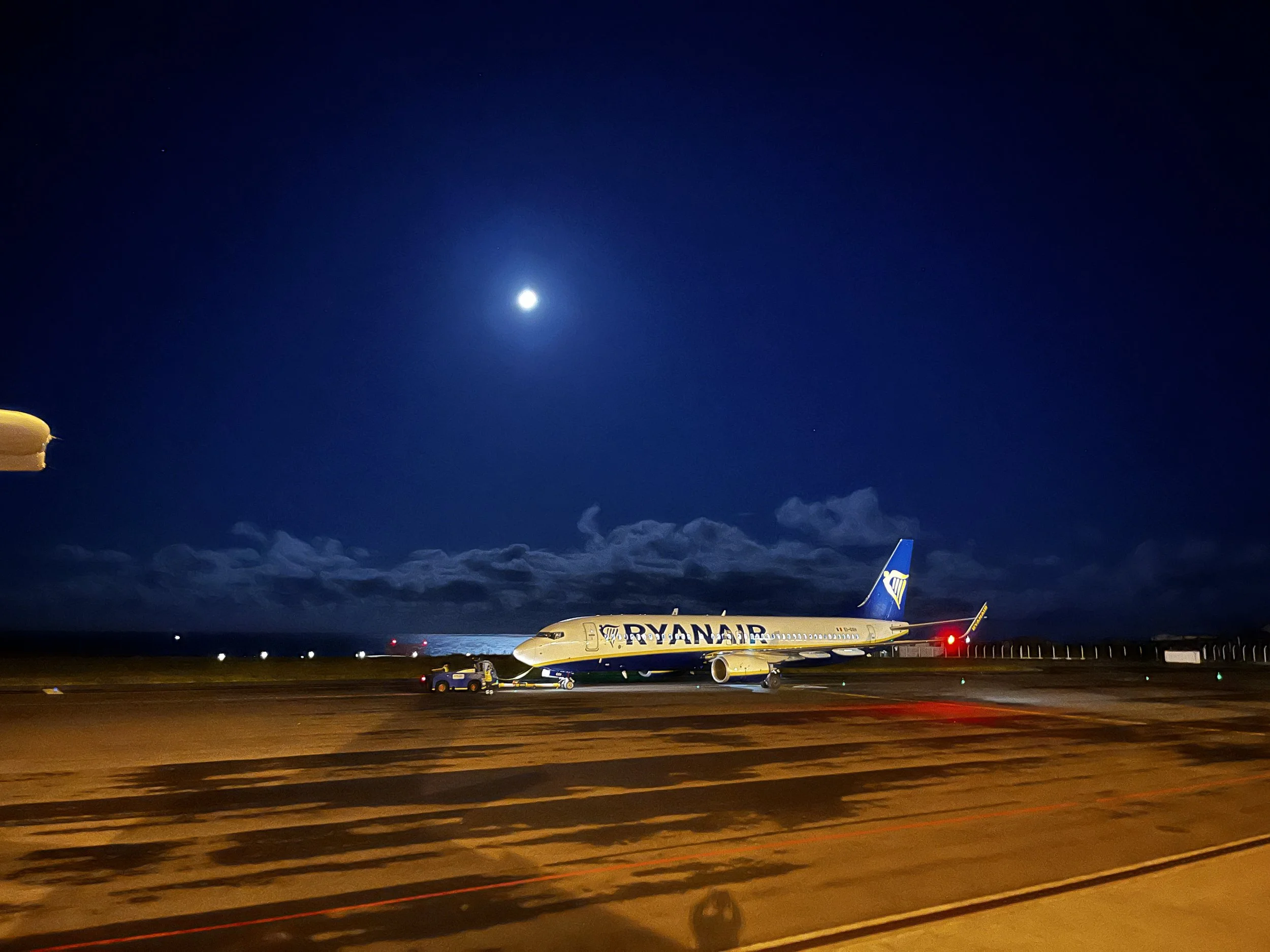
Moonlight, a dark sky and the Atlantic greet me from the tarmac.
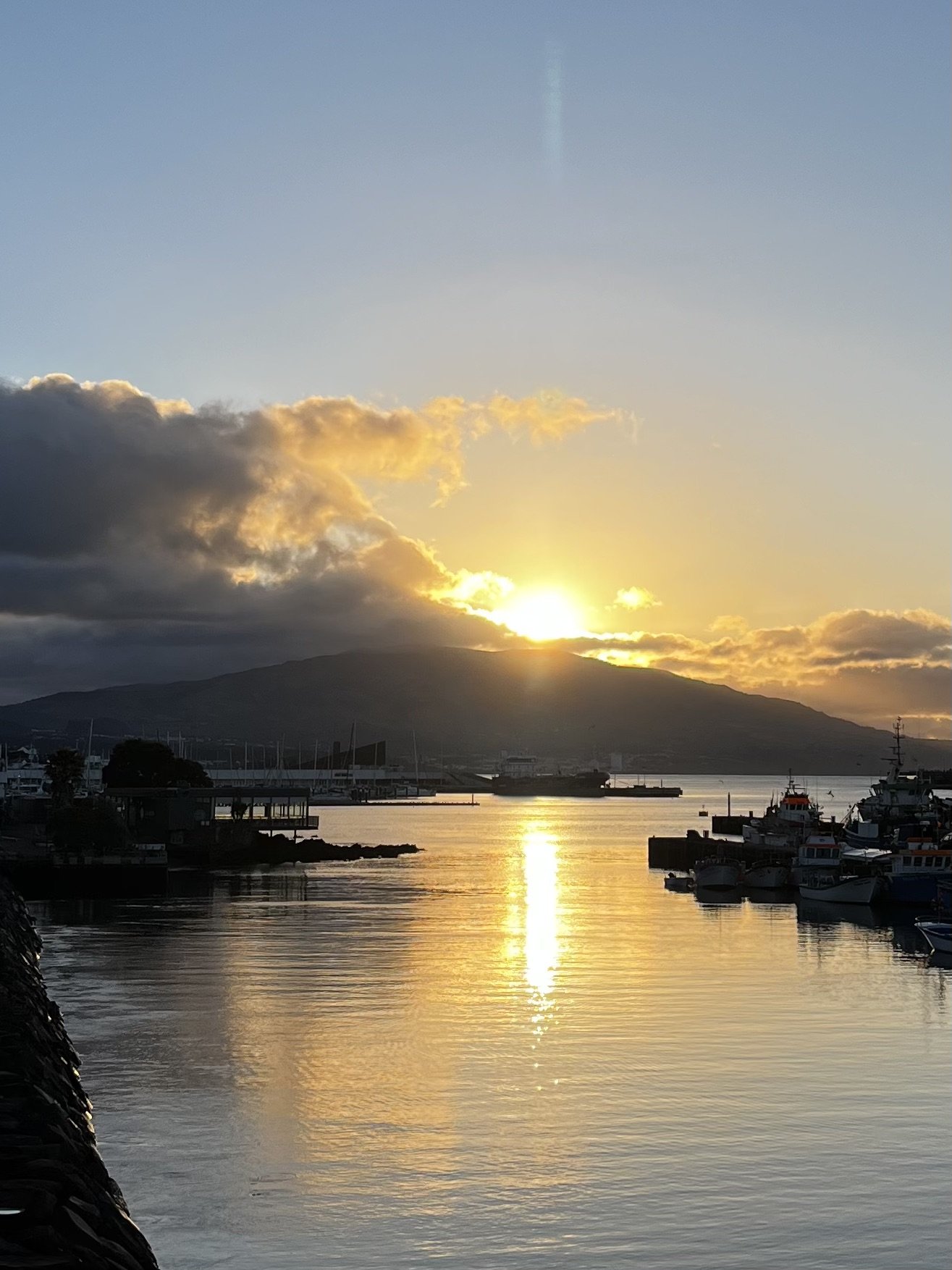
The first of many times I seriously had to ask myself "is this place real?"
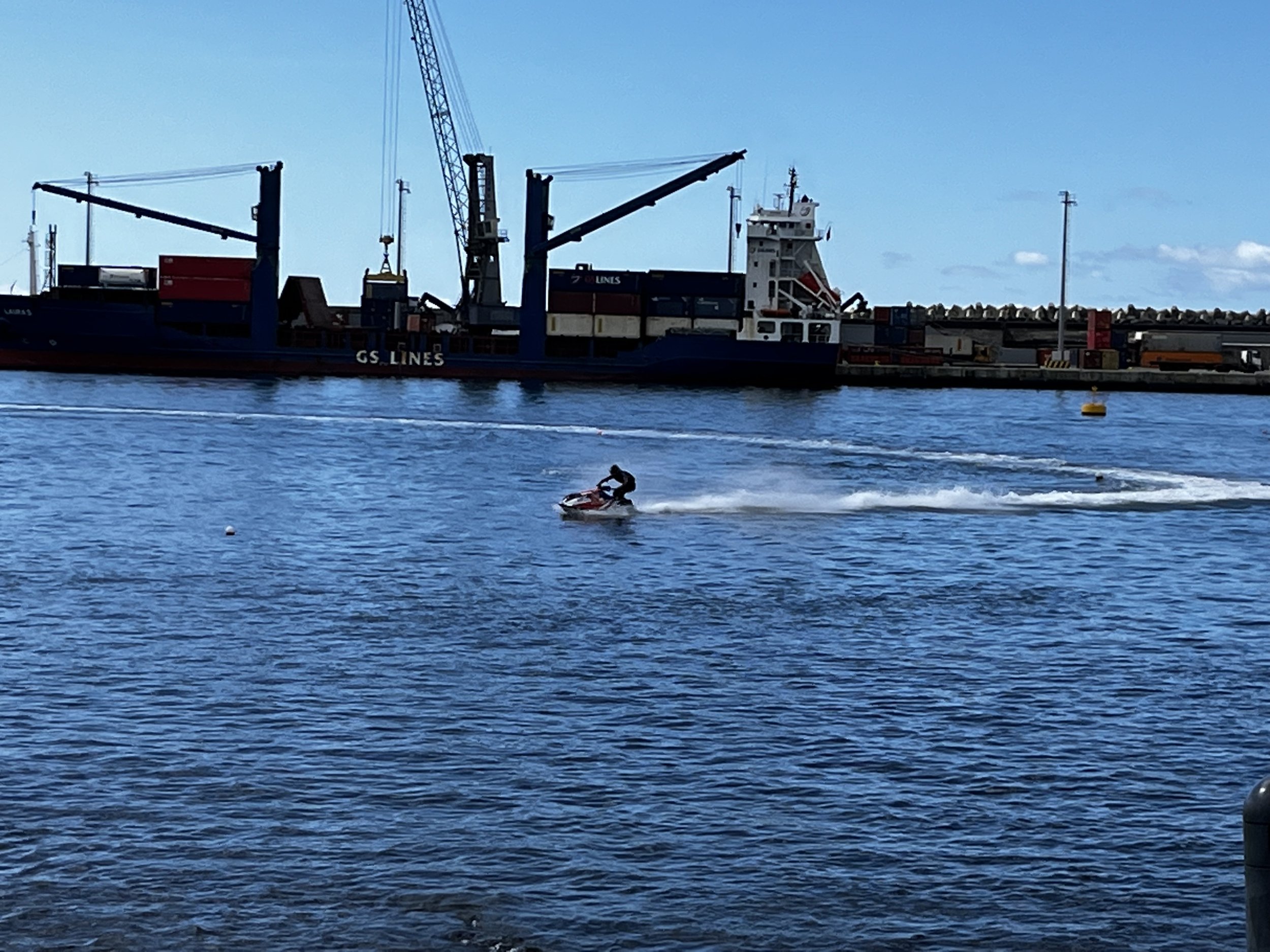
He was totally shredding on the jetski.
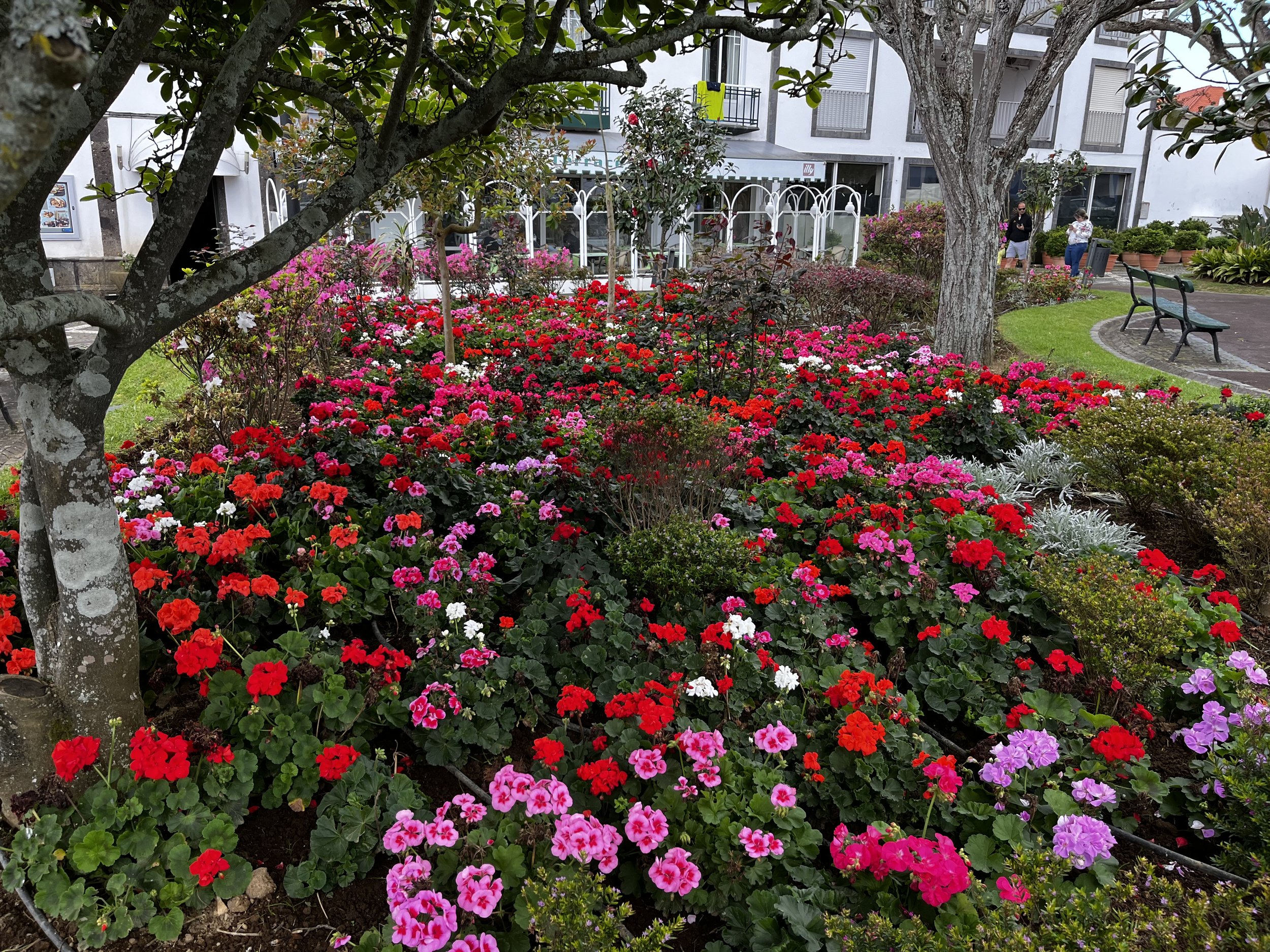
So many colorful spring flowerbeds.
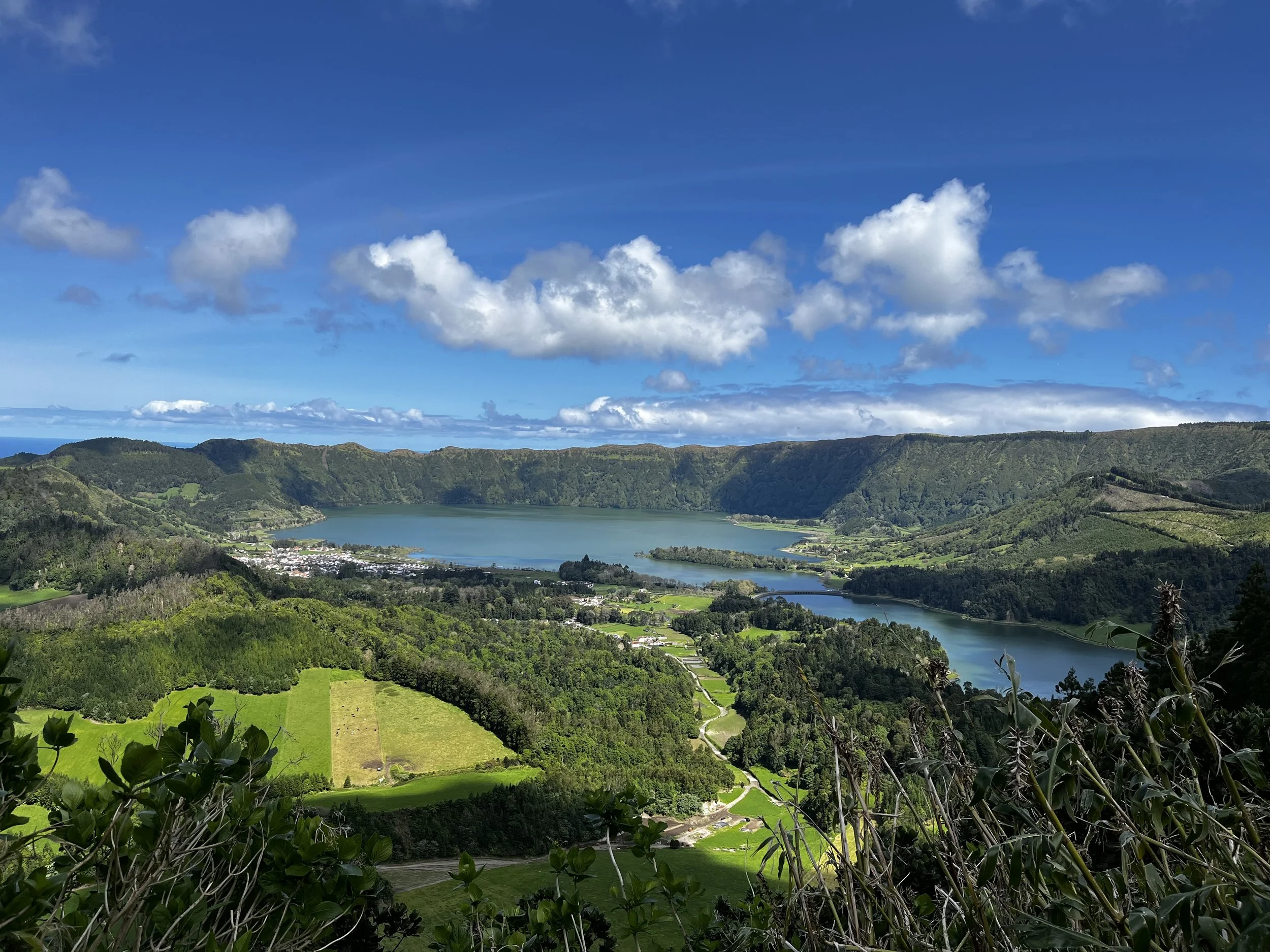
The view from the top did not disappoint.
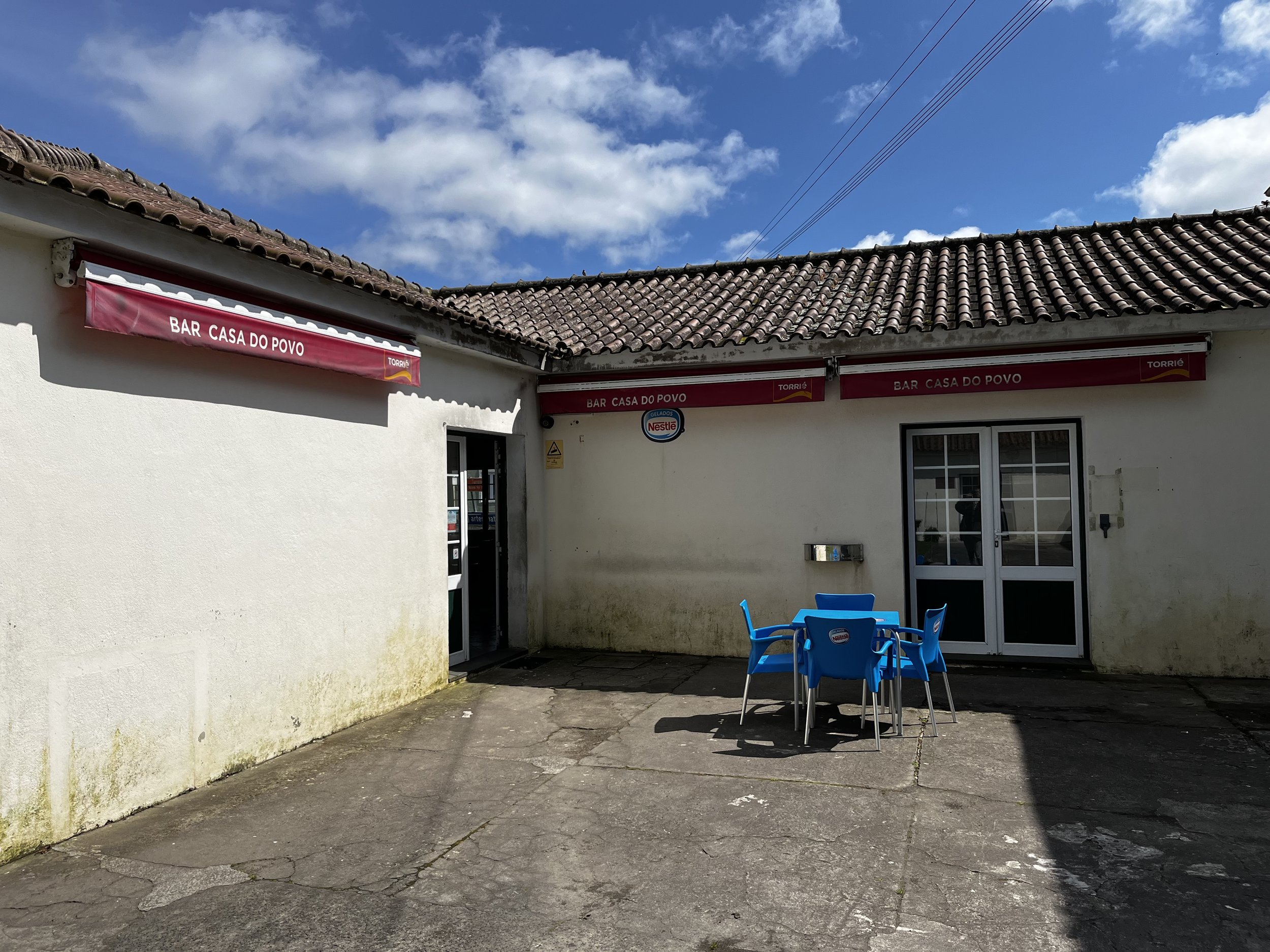
The restaurant where I was well-fed by a loud and kind family.
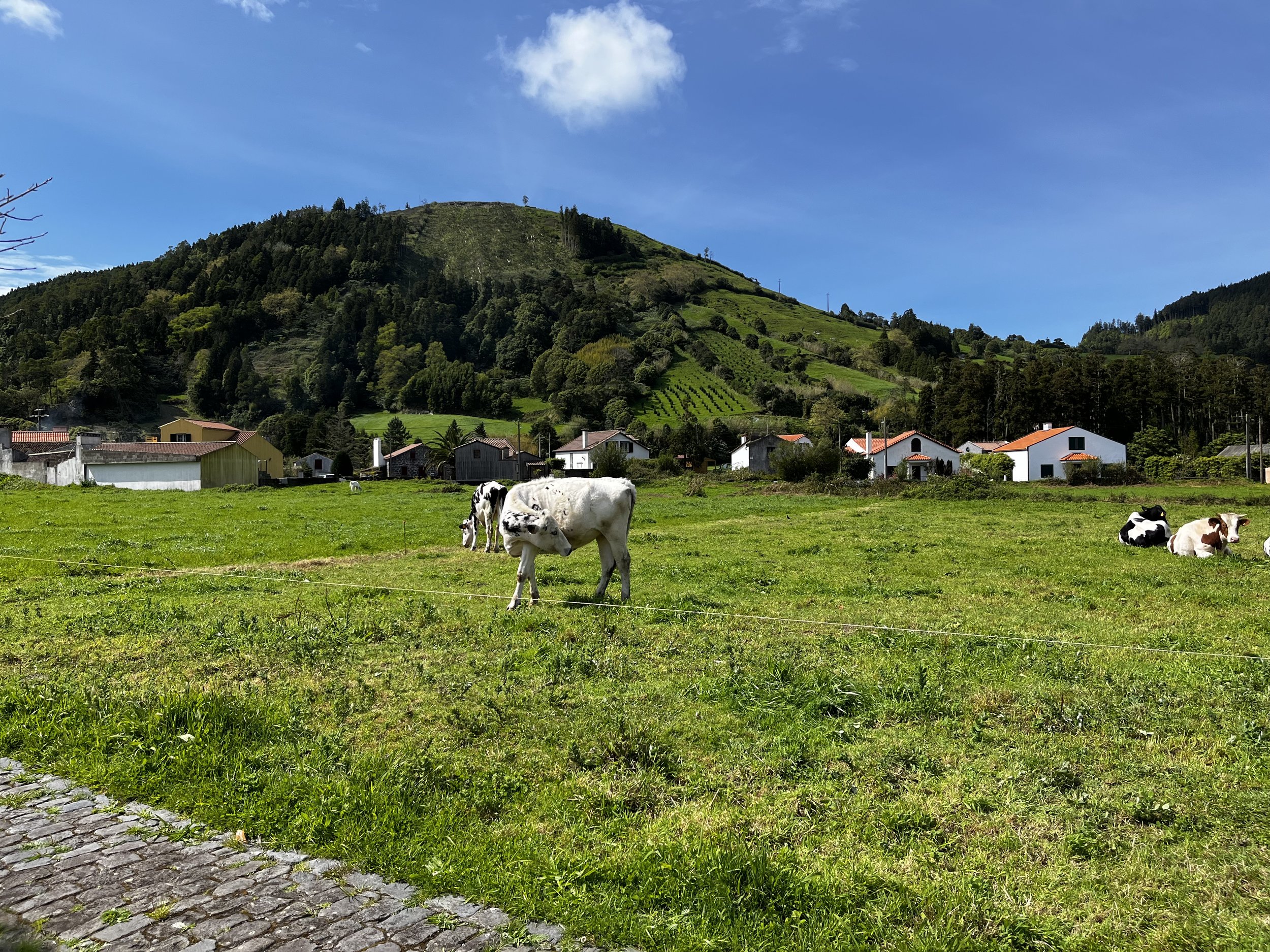
Even cows like to just sit around in the grass.
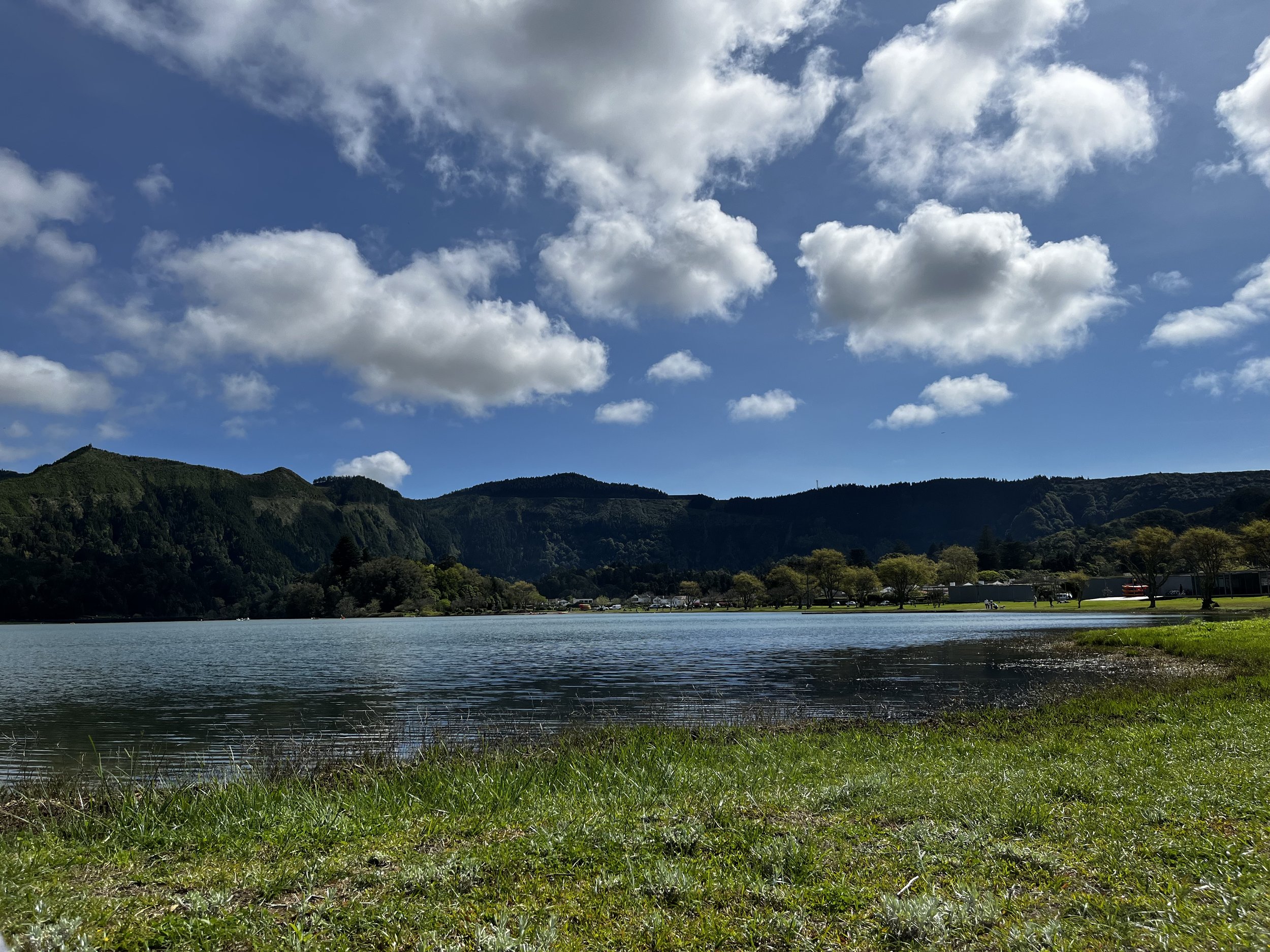
Perfect spot by the lake for a siesta.
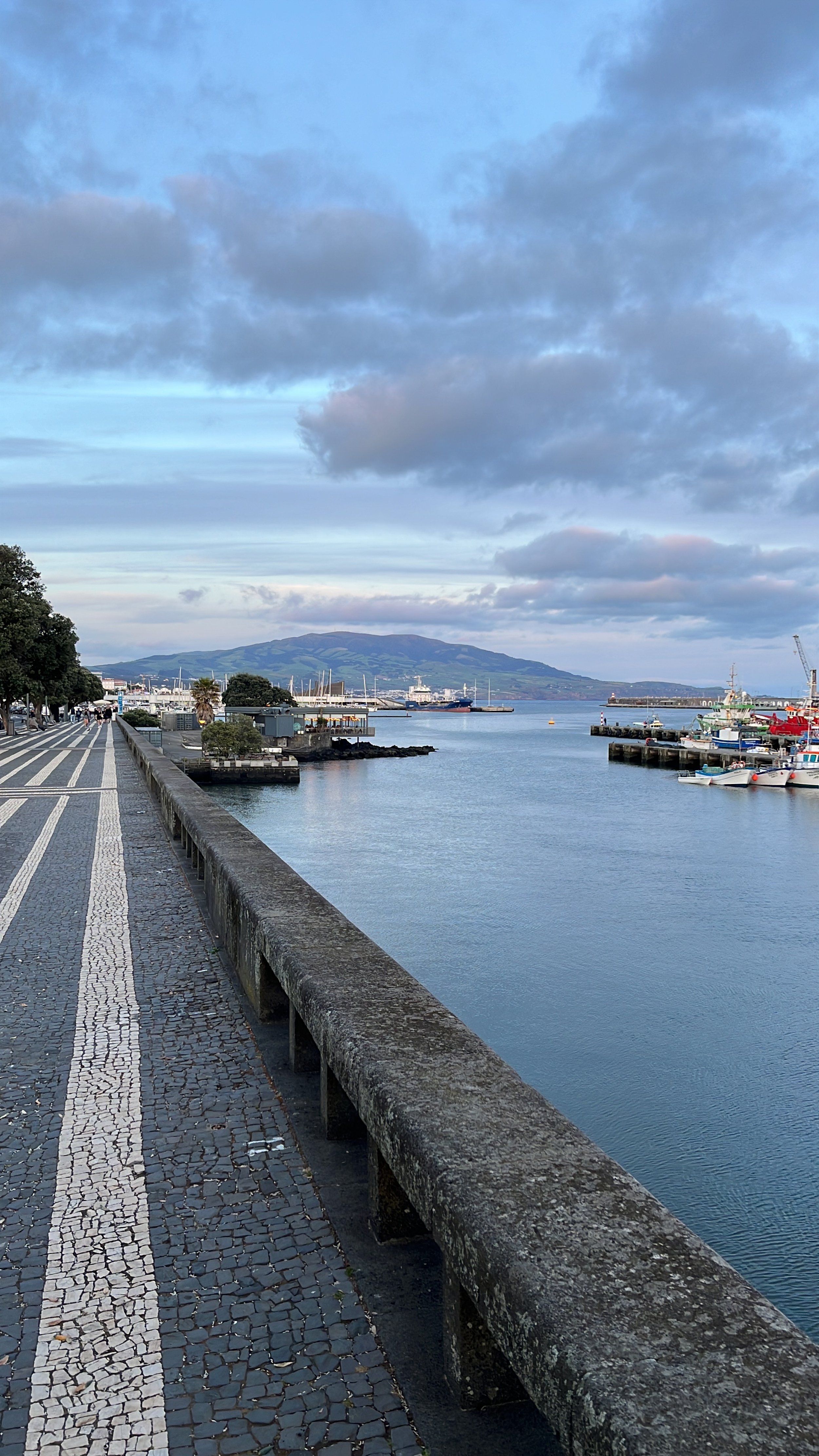
Wispy clouds over the water just before sunset.
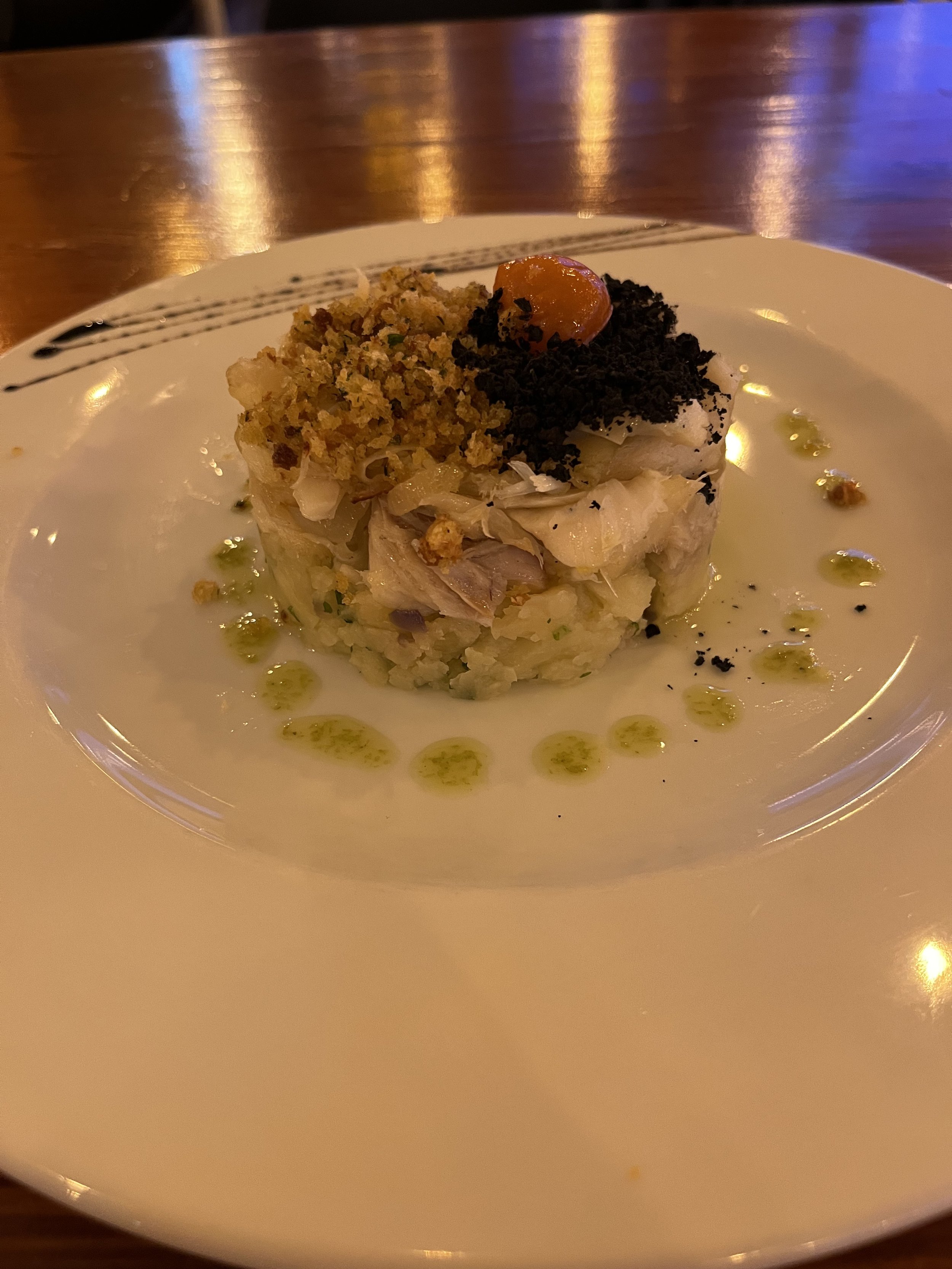
Divine cod cake. Gone in a few bites.